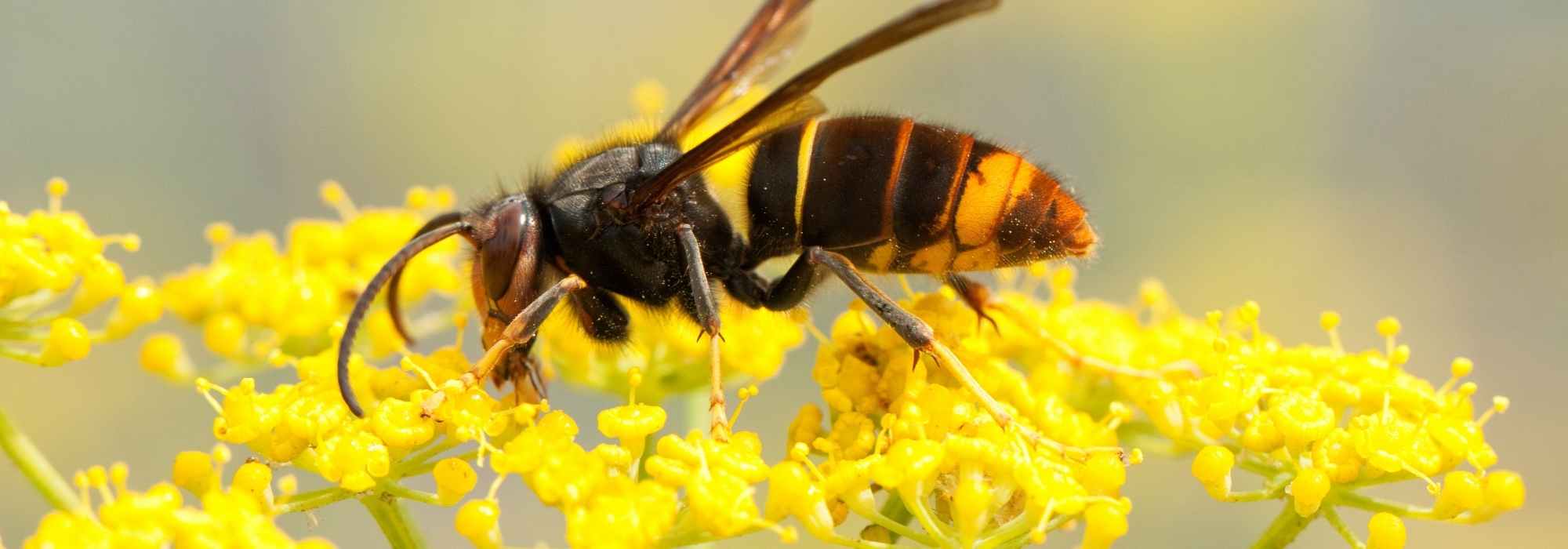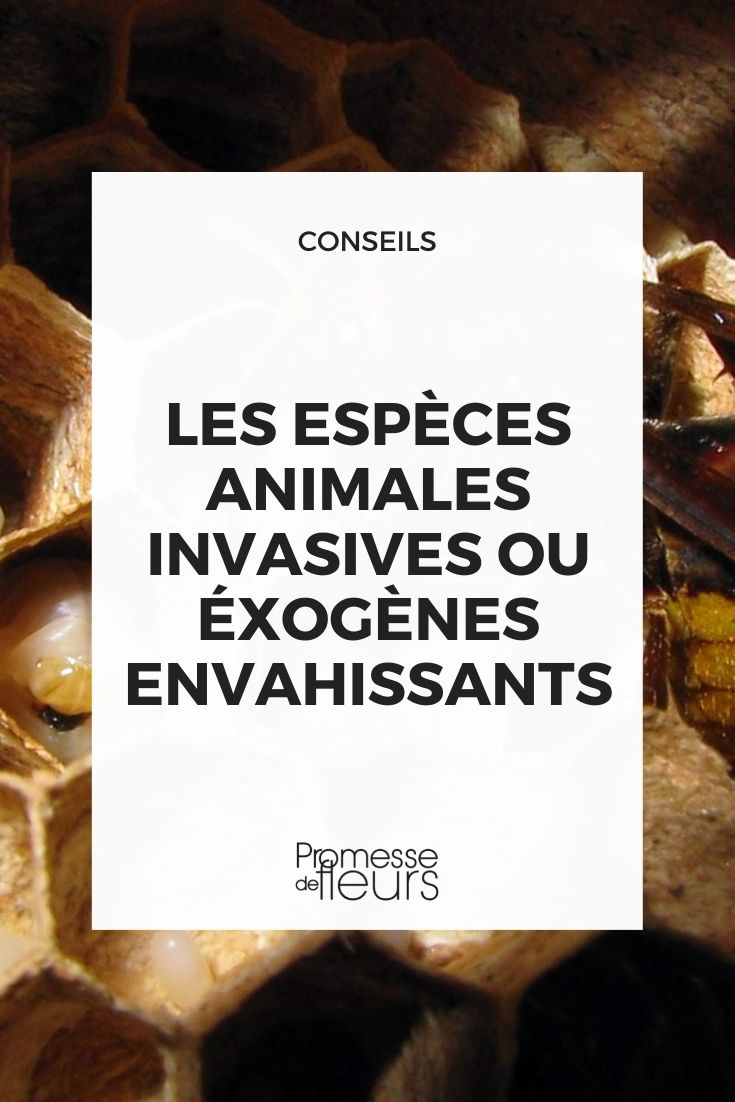
Invasive or exogenous animal species
A disaster for biodiversity
Contents
Like invasive plant species, invasive or exogenous animal species (IAS) pose economic and public health problems and significantly reduce biodiversity. Invasive species are, in fact, the second leading cause of biodiversity loss after habitat destruction by humans. These species (insects, fish, crustaceans, mammals, and reptiles) have most often been introduced by humans. They have adapted too well to our natural environments, reproduced very quickly and have directly (predation) or indirectly (habitat destruction, competition for food…) attacked native species.
What is an invasive species?
The exact and official term is: Exogenous Invasive Species or EIS or also Invasive Exotic Species. By anglicism, the terms “invasive” or “invasive” are most often used, even in some official documents.
An EIS (or invasive species) is therefore a plant or animal species (but it could also be a bacterium or a fungus) that is exotic and has established itself in an ecosystem that is not originally its own, reproducing at an alarming rate and, consequently, disrupting said ecosystem in a true invasion. Indeed, a plant or animal species becomes harmful mainly by “taking the place” (the ecological niche) of one or more endemic species. Sometimes the endemic or native species experiences such pressure that it disappears, threatening the life of other species that directly depended on it.
The notion of exoticism is sometimes complicated to define: from what geographical distances do we consider that a species is native or exotic? Nevertheless, there is an official list of EIS or exogenous invasive species, published each year by the European Commission.

Nest of Asian hornets
How did these species become invasive?
Not all exotic animal species are destined to become invasive. An animal species becomes invasive due to its adaptive capabilities:
- It reproduces faster than native species;
- The invasive species can even hybridise in some cases with a native species, leading to its disappearance;
- It adopts aggressive behaviour towards species in the same ecological niche;
- Its diet is less specific than that of endemic species;
- It becomes a predator of one or more species without being preyed upon itself;
- Its ecological valence is broader: this means that the exotic species can live and thrive across a wide range of ecological factors (temperature, humidity…) while even slight changes can impact a native species;
- It is more resistant to environmental pollution or climate change.
 The familiar crow from Asia threatens local species and crops
The familiar crow from Asia threatens local species and crops
An environmental issue... but not only that
Invasive species represent the second leading cause of global biodiversity loss, following the destruction of natural habitats by human activity.
Invasive alien species (IAS) are problematic at various levels:
- for the environment, by disrupting the often fragile balances of ecosystems: this will significantly impact the biodiversity of the medium in which the invasive species has been introduced;
- they bring their share of exotic diseases and parasites: native species that are infected do not know how to combat these diseases. The Louisiana crayfish (Procambarus clarkii) has introduced crayfish plague, while the Asian ladybird (Harmonia axyridis) has brought yet another parasite for our bees. Exotic species can also pose a danger to human health by carrying diseases or parasites that can infect humans;
- invasive exogenous species can severely impact an economy by destroying crops or trees, killing bees (affecting honey and fruit production), or damaging riverbanks (as in the case of muskrats, for example): according to the European Union, over 10 billion euros per year are lost as direct financial losses or in the context of invasive species management projects. Indeed, management of harmful invasive species is organised throughout Europe and the world.
Please note: let us reassure ourselves, not all exotic species introduced, most often by humans, necessarily become invasive. Only a small portion of them will do so if they have the capabilities (adaptability, high reproduction, absence of predators…). The issue of IAS should not be taken lightly, but we should also avoid the opposite extreme of condemning all species from abroad.
 The muskrat is one of the contributors to riverbank erosion
The muskrat is one of the contributors to riverbank erosion
Some examples of invasive animal species in the garden
We are more accustomed to invasive plant species in the garden. However, we may also encounter some EEE animal species in our little green spaces; here are a few:
- Asian hornet (Vespa velutina): this hornet, smaller than our European hornet, decimates bee populations;
- New Zealand flatworm (Arthurdendyus triangulatus): a voracious earthworm killer;
- Florida turtle (Trachemys scripta elegans): threatens the European pond turtle and can decimate amphibian populations in a pond;
- Grey squirrel (Sciurus carolinensis): tends to eradicate the red squirrel and strips healthy trees, unlike other squirrel species that preferentially target trees at the end of their life;
- Raccoon (Procyon lotor): a carrier of rabies, mange, and distemper, it is also very intelligent and adapts to everything, to the detriment of other native mammals;
- Muskrat (Ondatra zibethicus): generally has negative impacts on riverbanks and also reduces reed beds.
And what about the others? Asian ladybird (Harmonia axyridis), buxus moth (Cydalima perspectalis), or pine processionary caterpillar (invasion due to climate change)… are problematic exogenous species, but are no longer on the official EEE list published by the European Commission.

Grey squirrel, Florida turtle, New Zealand flatworm, raccoon, Asian hornet, and muskrat
- Subscribe!
- Contents
































Comments